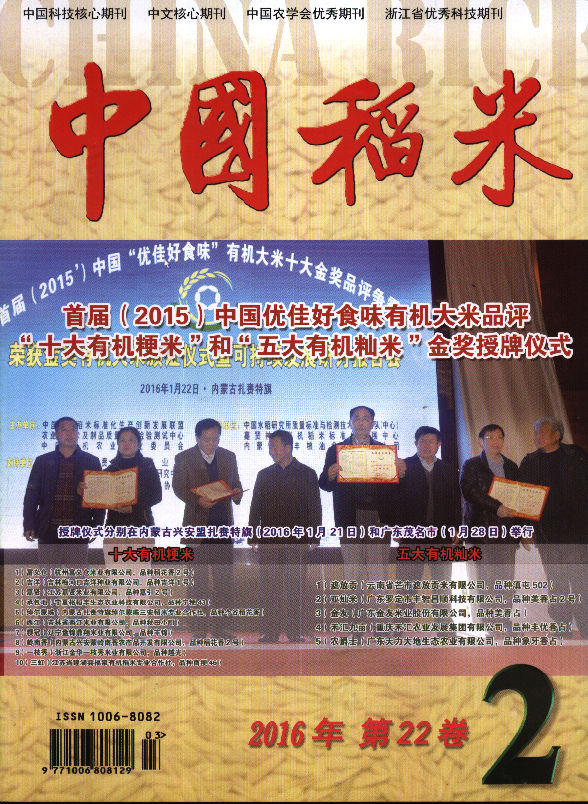|
|
Effects of Secondary Element and Microelement Fertilizer Application on Lodging Resistance and Yield of Super Rice
2016, 22(2):
21-26.
DOI: 10.3969/j.issn.1006-8082.2016.02.004
A field experiment was carried out to investigate the effects of secondary element and microelement fertilizer (main component contains CaO, MgO, ZnO and SiO2, with content of 20%, 12%, 10% and 3%, respectively) on the lodging resistance and yield of Tianyou 3618, at Guangzhou with four levels of fertilizer application (F0, F1, F2 and F3 referred to 0, 25, 50 and 75 kg/667 m2 in whole growth period, respectively) in 2014. The results showed that secondary element and microelement fertilizer decreased the lodging index and the height of gravity center. The lodging index of F1 and F2 treatments were significantly decreased by 10.50% and 8.37% respectively, and the gravity center height were decreased by 2.56% and 2.22% respectively. The breaking resistance of the plant, stem, and basal internodes were significant increased by 10.78%, 13.49% and 12.33%, and the fresh weight percentage and culm wall thickness of the internode were significant increased by 11.93% and 4.81%, respectively.The secondary and microelement fertilizer had significant effects on the lodging index of basal internodes. Compared with the third internodes, the lodging index of second internode decreased by 5.51 percentage points, and the internode fresh weight percentage, fresh weight/dry weight, internode culm wall thickness and internode diameter increased by 3.55, 2.41, 0.98 and 0.19 percentage points. The secondary and microelement fertilizer significant increased the spike rate and green leaves area of the heading period. These results showed that the secondary and microelement fertilizer was beneficial to the formation of rice yield, improved rice lodging resistance. The suitable amount of the secondary and microelement fertilizer application was 25~50 kg/667 m2.
|

